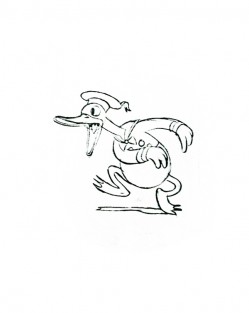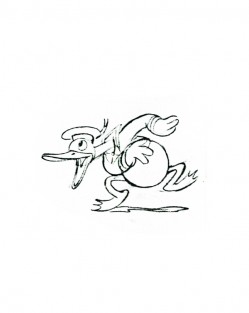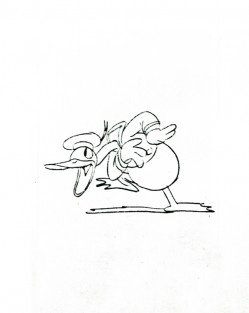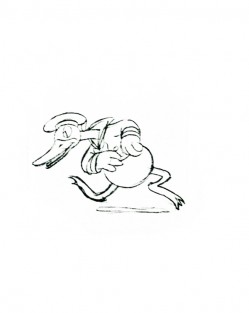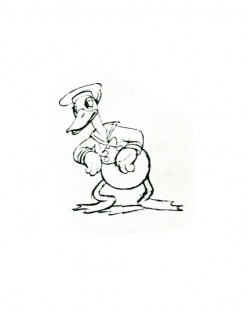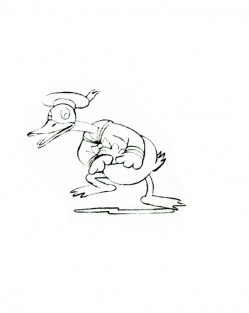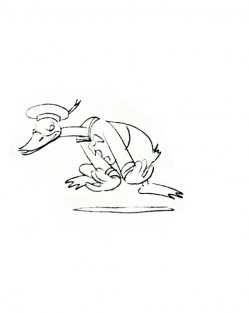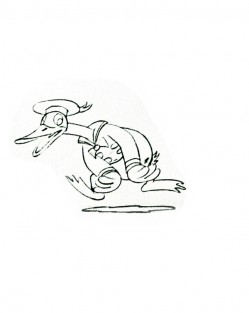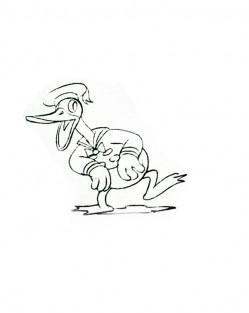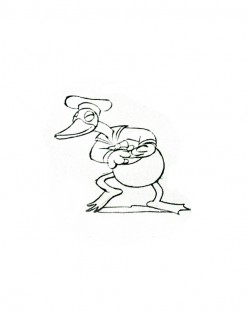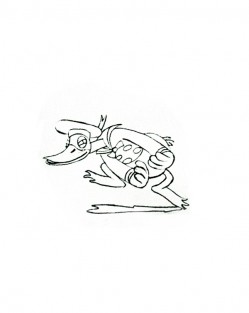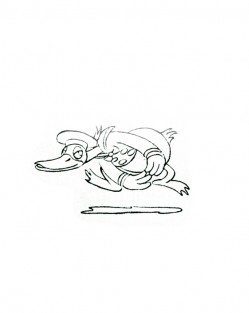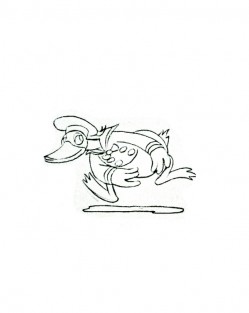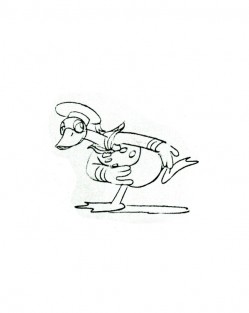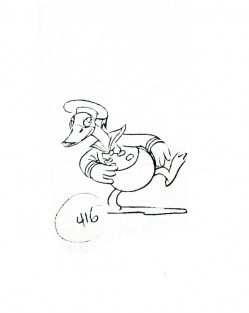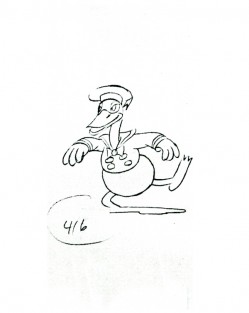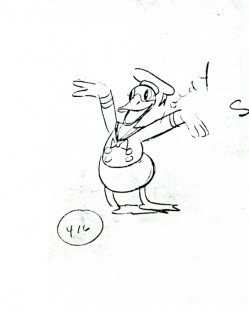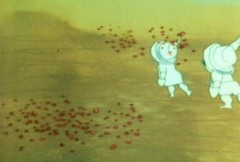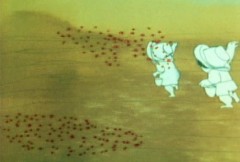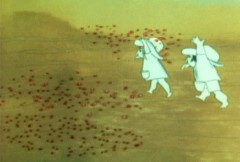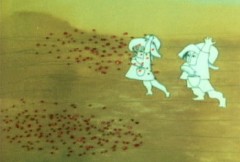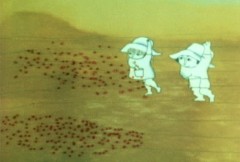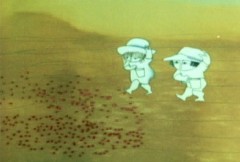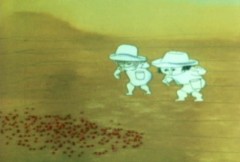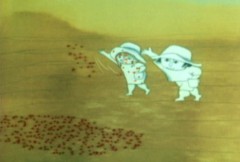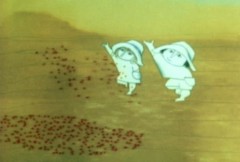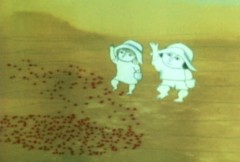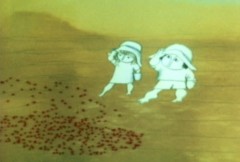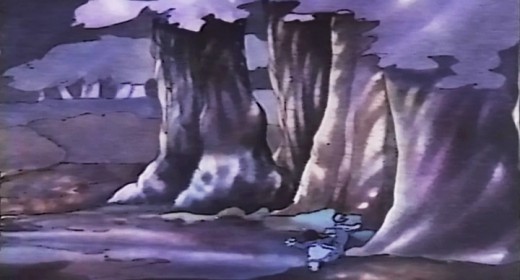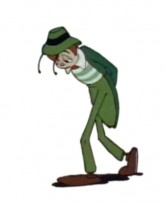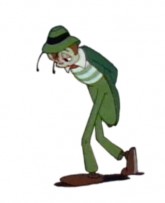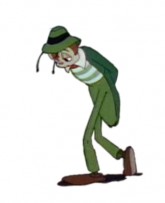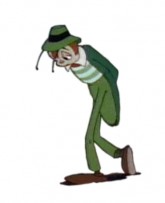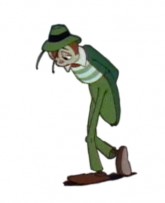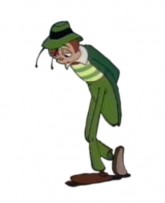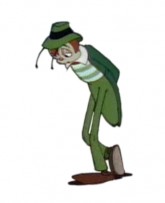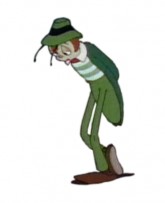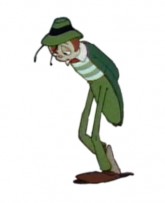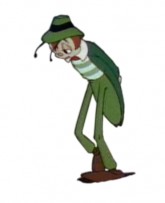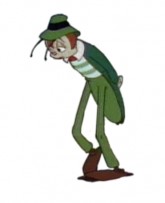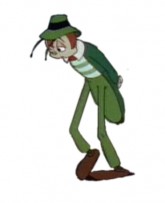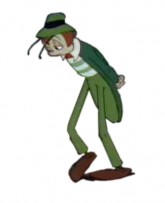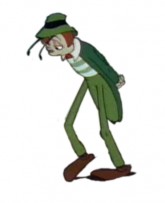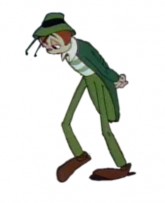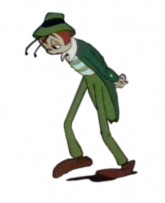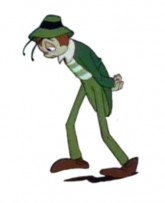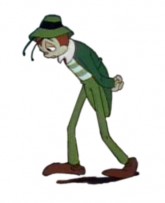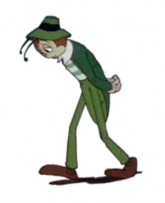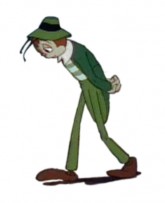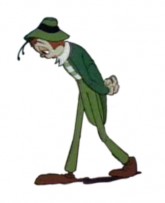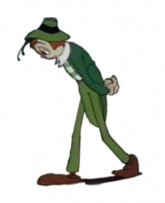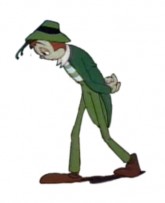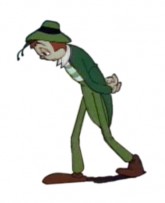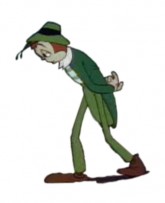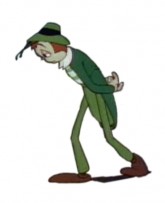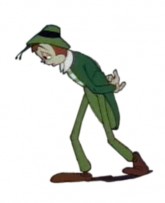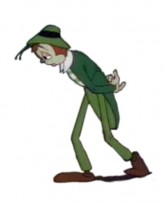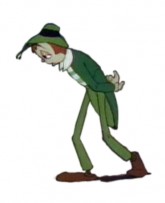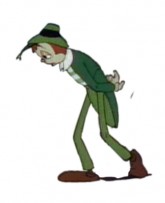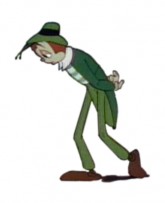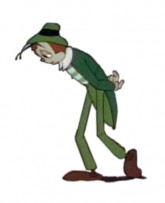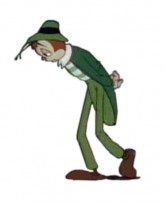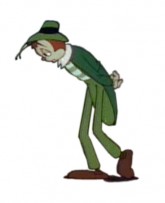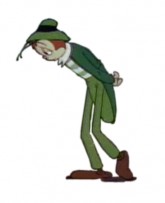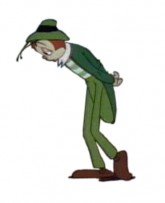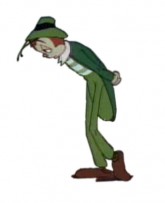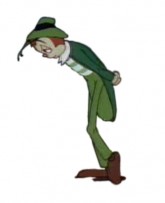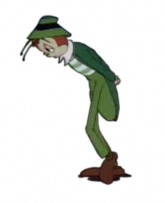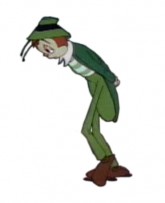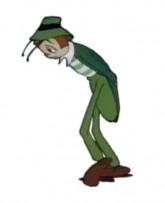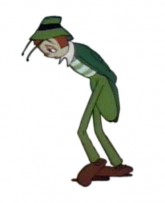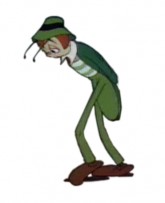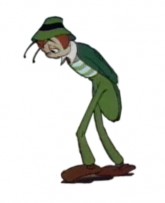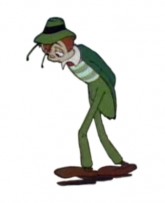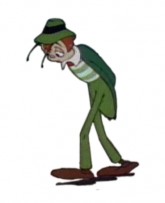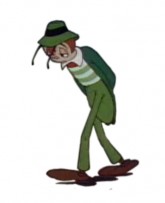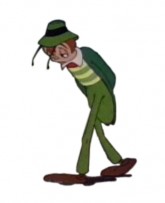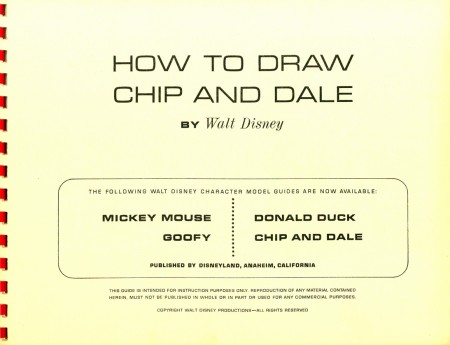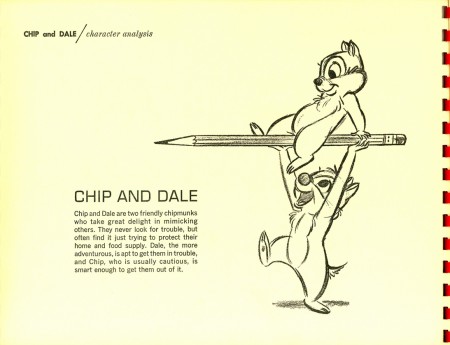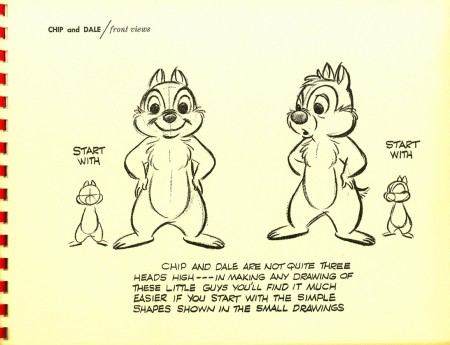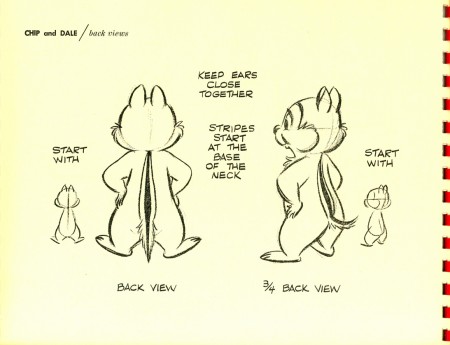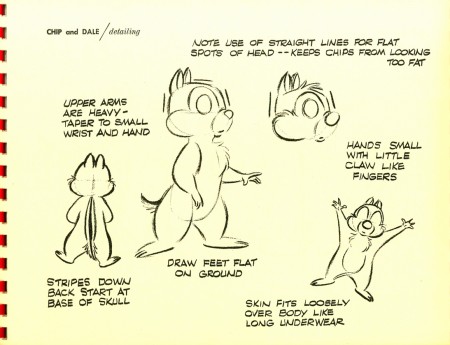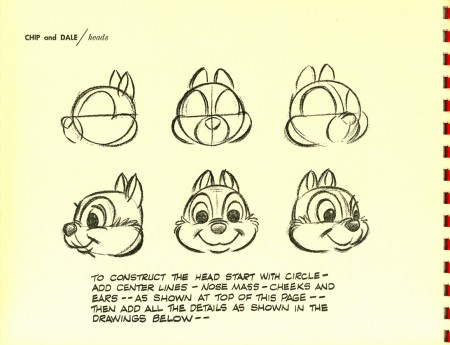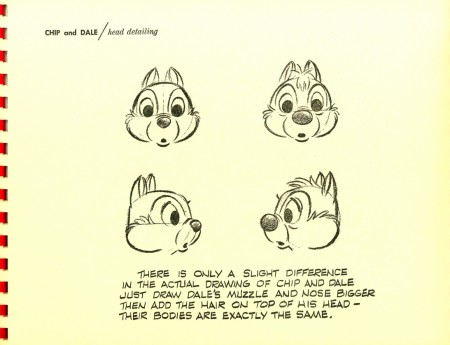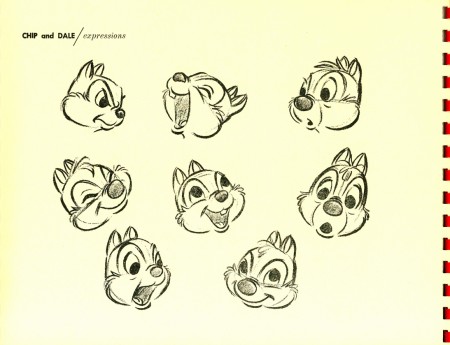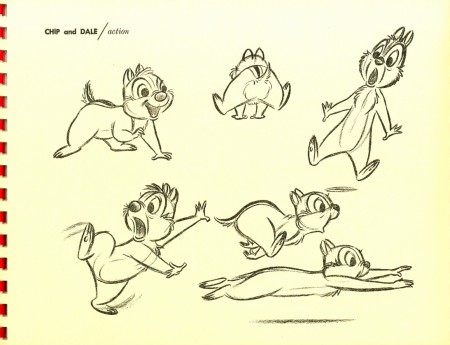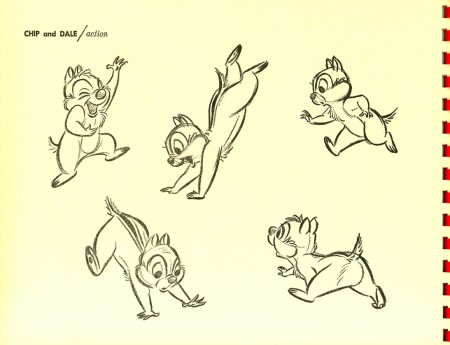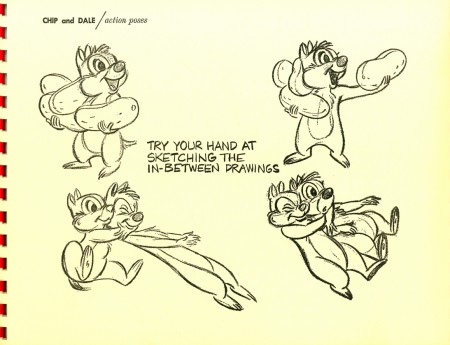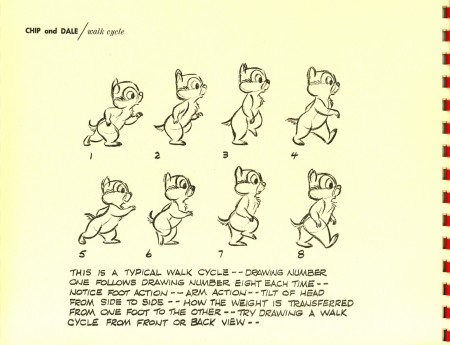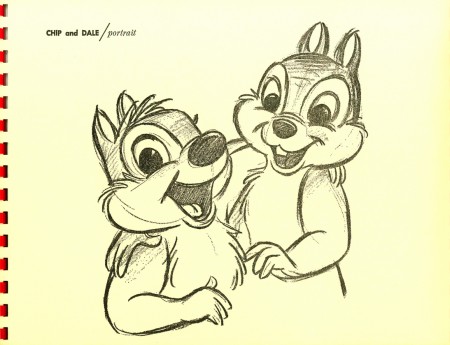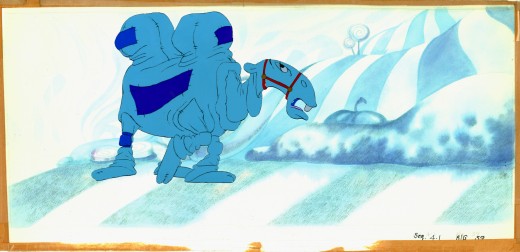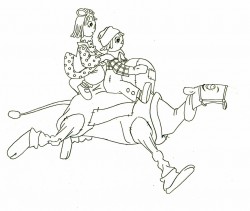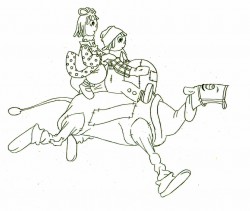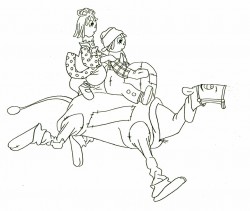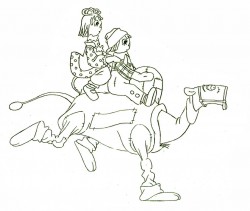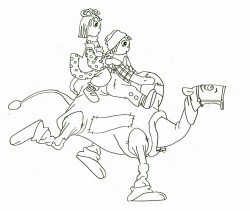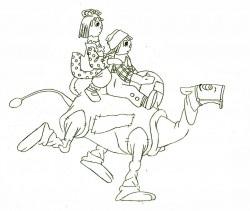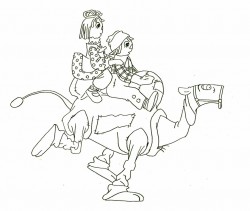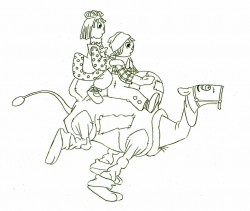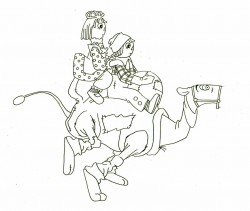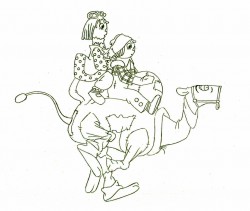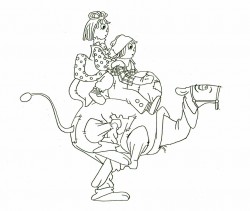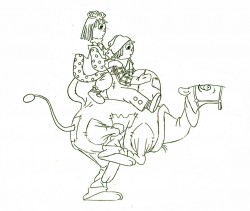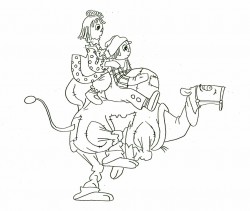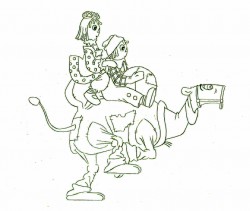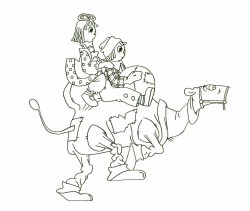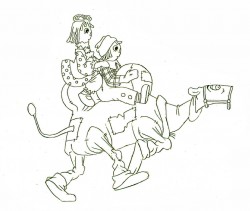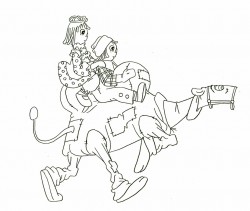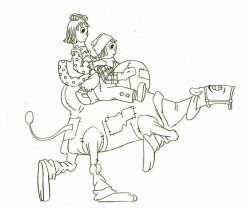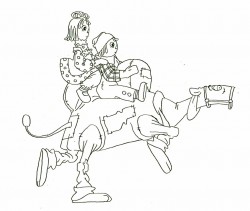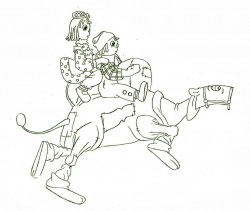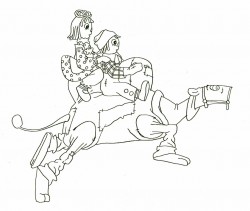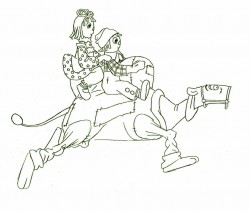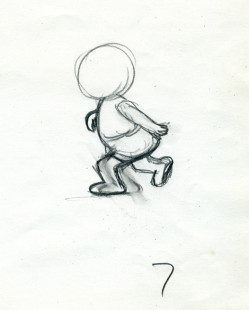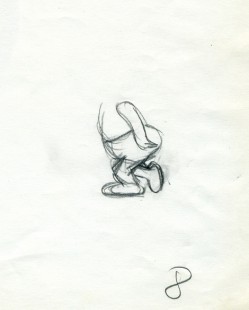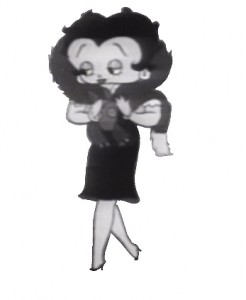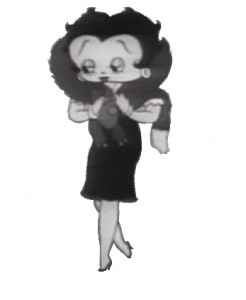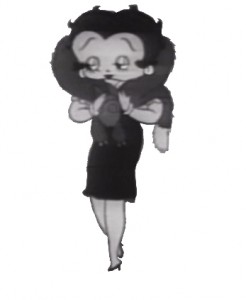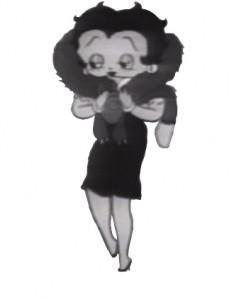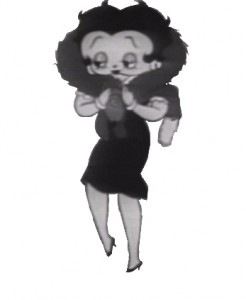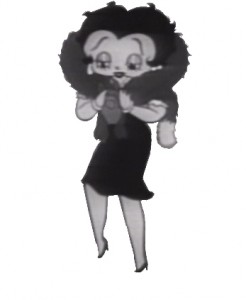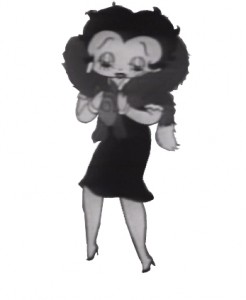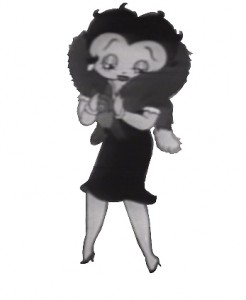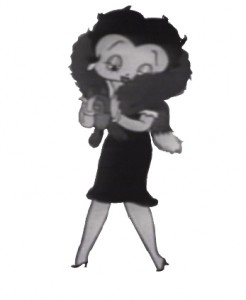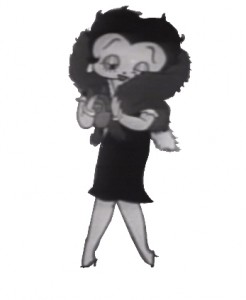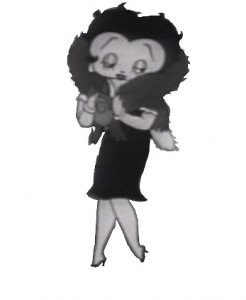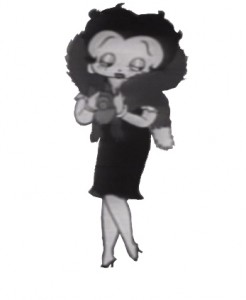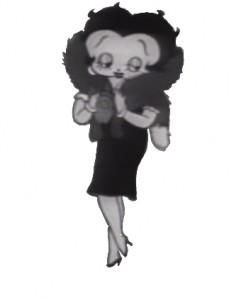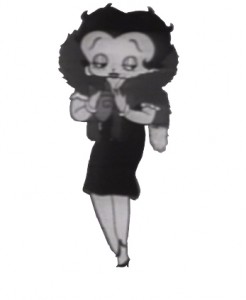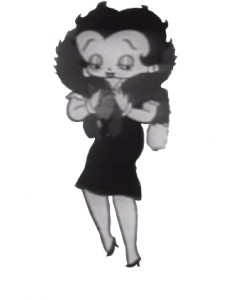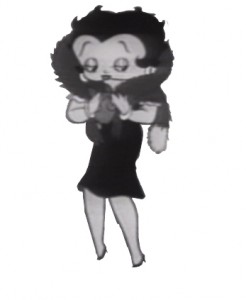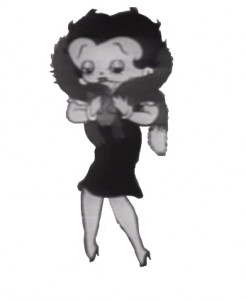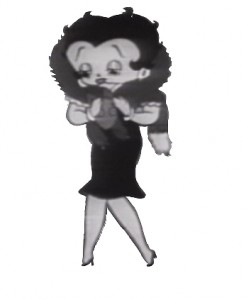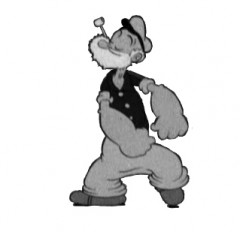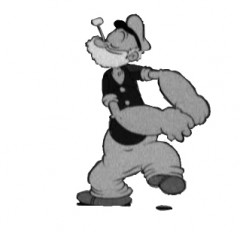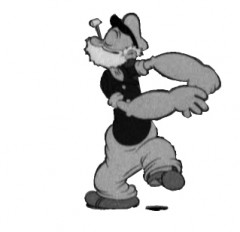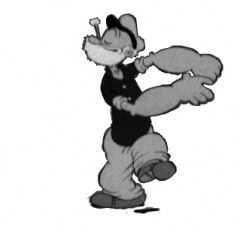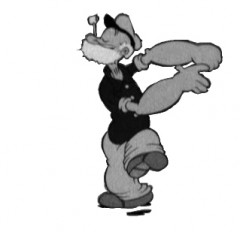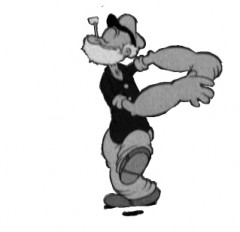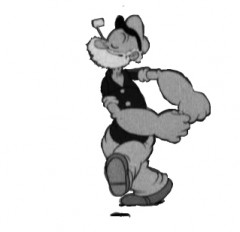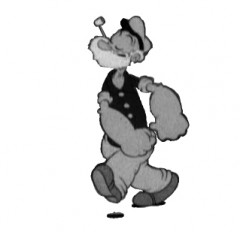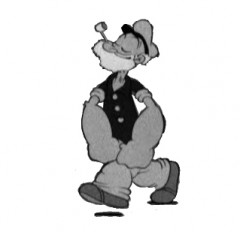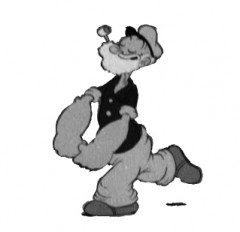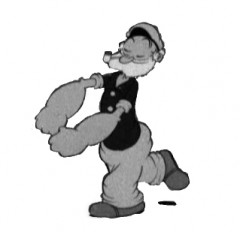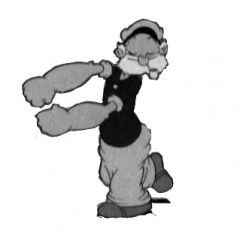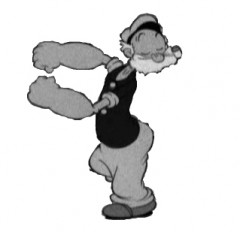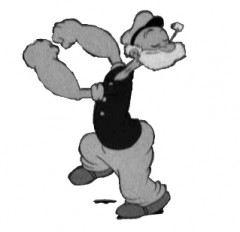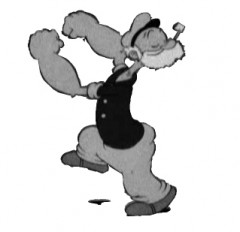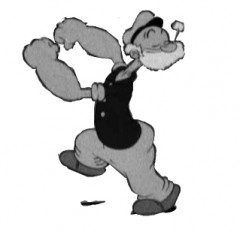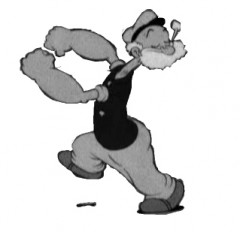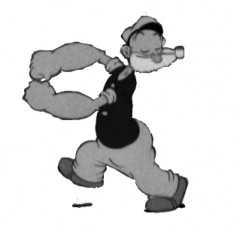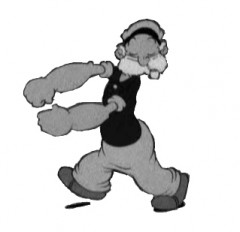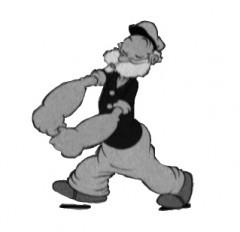Category Archivewalk cycle
Animation &walk cycle 30 Nov 2009 08:58 am
Donald Dance Flipbook
- Here is a small bit of Donald Duck animated by Les Clark for Mickey’s Grand Opera. I’ve taken the bits I have and ran them through AfterEffects just because I like the drawings and wanted to see how they played out. I just love this Donald.
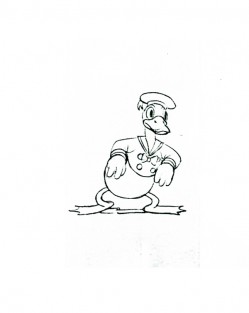 1
1 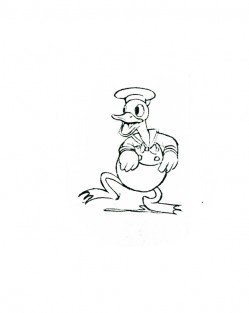 2
2(Click any image to enlarge.)
Donald’s Dance
Right side to watch single frame.
Animation &Animation Artifacts &Hubley &Tissa David &walk cycle 23 Nov 2009 08:52 am
Tissa Seeding
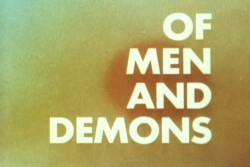 - Of Men and Demons, to me, has some of the finest artwork in any of the Hubley shorts. As I pointed out, once before, Tissa David told stories of reworking some animation by Art Babbitt, which was done on 12-15 levels and had to be reworked to come down to four levels. It was a monster of a puzzle for her and included reanimating some of the bits that were too complex to work properly in their reduced form. She then had to take over the sequence and complete the animation of it.
- Of Men and Demons, to me, has some of the finest artwork in any of the Hubley shorts. As I pointed out, once before, Tissa David told stories of reworking some animation by Art Babbitt, which was done on 12-15 levels and had to be reworked to come down to four levels. It was a monster of a puzzle for her and included reanimating some of the bits that were too complex to work properly in their reduced form. She then had to take over the sequence and complete the animation of it.
Here is a short piece that Tissa did of the little woman character seeding her front yard. There’s so much grace in every one of these drawings and enormous information in the walk, itself.
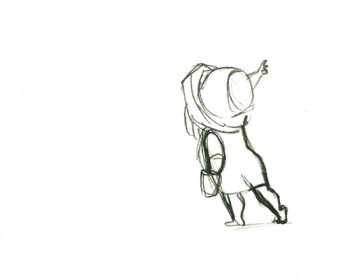 G47
G47(Click any image to enlarge to full animation sheet.)
.
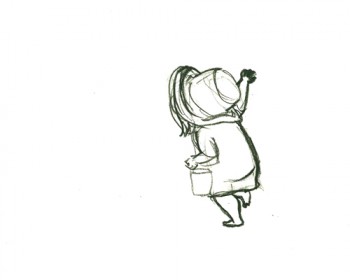 G49
G49.
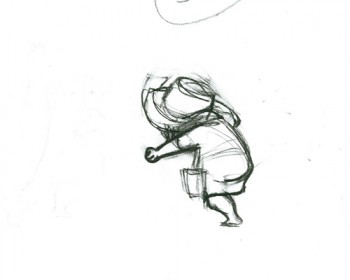 G51
G51.
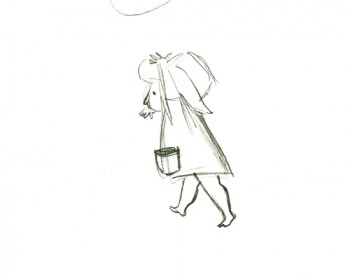 G53
G53.
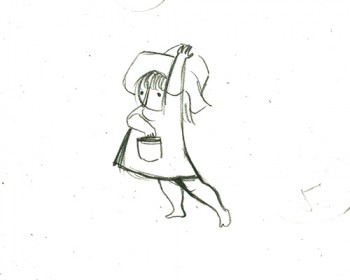 G55
G55.
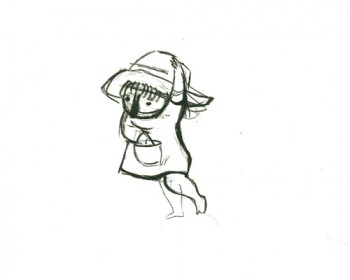 G57
G57.
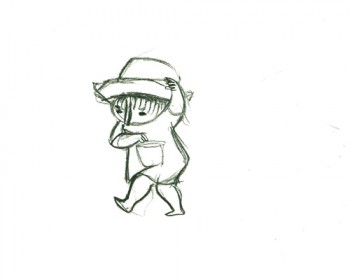 G59
G59.
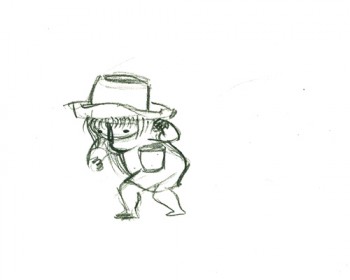 G61
G61.
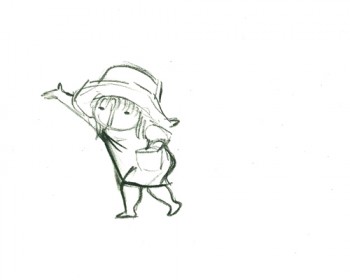 G63
G63.
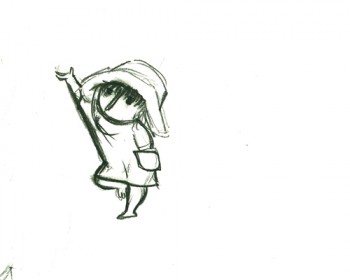 G65
G65.
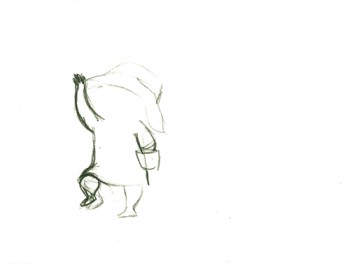 G67
G67.
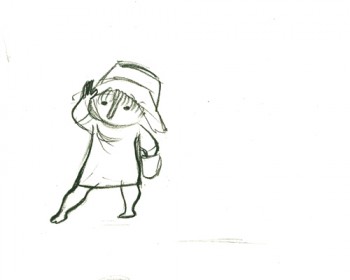 G69
G69
And here are the matching frame grabs from the film.
Seeding crops PT & Final Color
Click left side of the black bar to play.
Right side to watch single frame.
Animation &Animation Artifacts &walk cycle 12 Nov 2009 08:31 am
Tissa’s Ann Run
- Here’s a run Tissa David did for Raggedy Ann. The character is tiny in the frame. The entire scene is more than 45 secs long (no cuts); this run comes toward the end of it.
Tissa had the character run across two fields of paper, and animated a slight move of the background underneath her. Consequently, it feels as if she’s slipping in place a bit. However, if you see it in the film, you’ll see that she looks anchored to the BG.
 455
455If you click any drawing the actual animation sized paper will pop up.
 456
456
You’ll note that Tissa worked on standard animation paper – 10½ x 12½.
When Ann runs off the edge of one field, she pops to the other edge
of the next field. It saved having to work on 2 field paper.
Click left side of the black bar to play.
Right side to watch single frame.
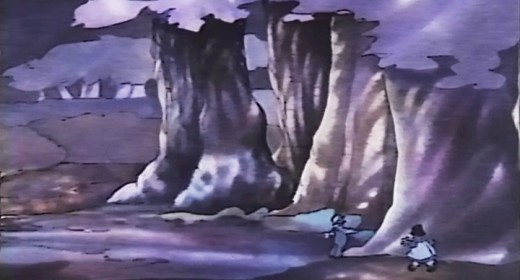
These are the first and last frames of this walk taken from the actual film.
It’ll give you an idea of how tiny they are in the frame, yet how large they were drawn.
David Nethery, in the comments section, left a link to a QT movie of this scene. You should read David’s excellent comment and check out the scene in motion.
Animation &Fleischer &Frame Grabs &walk cycle 04 Nov 2009 08:27 am
Hoppity walk
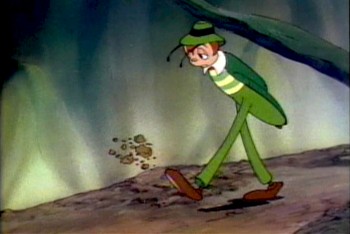 - Hoppity Goes To Town is a feature I’ll always love. The second and last feature from the Fleischer brothers’ studio is a bit limited in its animation, but I like the story and the way it’s told. Admittedly, this film is something of a personal favorite because I first saw the film in my formative years, age around 10. Today, I recognize some of the problems it has, yet I find it a completely charming and entertaining animated film.
- Hoppity Goes To Town is a feature I’ll always love. The second and last feature from the Fleischer brothers’ studio is a bit limited in its animation, but I like the story and the way it’s told. Admittedly, this film is something of a personal favorite because I first saw the film in my formative years, age around 10. Today, I recognize some of the problems it has, yet I find it a completely charming and entertaining animated film.
The Fleischer studio had figured out how to make a cartoon, and this one was arguably ahead of its time. It’s the first animated feature based on an original story. The character of Hoppity, obviously built on the personality of Gary Cooper, is endearing to me, and I think the movement of this character not bad. There’s some distortion and bad drawing throughout the film, I don’t really mind.
I’ve chosen a walk that was not quite a cycle, and I’ve made it one. It starts with a kick of dirt – Hoppity is disappointed and frustrated – and quickly moves into this section. It’s a slow walk – 52 frames, on ones – and is a complex one. He pulls both legs in a subtle and circular arc as they move forward, lumbering from left to right to left. His legs almost look like matchsticks split at the knees. It makes for an interesting walk (though they do change size a bit as they move.)
Here’s Hoppity:
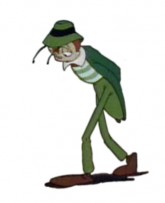 1
1 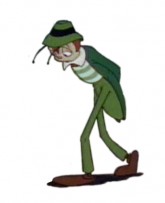 2
2 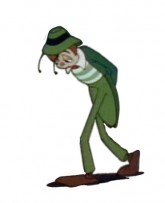 3
3(Click any image to enlarge.)
Hoppity’s sad walk on ones
Click left side of the black bar to play.
Right side to watch single frame.
Animation Artifacts &Bill Peckmann &Books &Disney &walk cycle 08 Oct 2009 08:28 am
How To Draw Chip & Dale
- In the past I’ve posted the series of booklets that Disney released via the Art Corner at Disneyland. How To Draw Mickey, Donald, Goofy and Pluto have been posted. The only one left is How To Draw Chip & Dale. Thanks to Bill Peckmann, I can post this last booklet.
The past booklets I posted were actually rereleased publications that were stapled together and handed out at the Lincoln Center celebration for all things Disney back in 1973.
This Chip & Dale book, however, is the real thing. It was an original published in 1955.
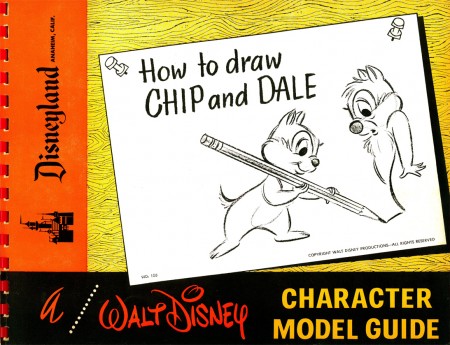 1
1(Click any image to enlarge.)
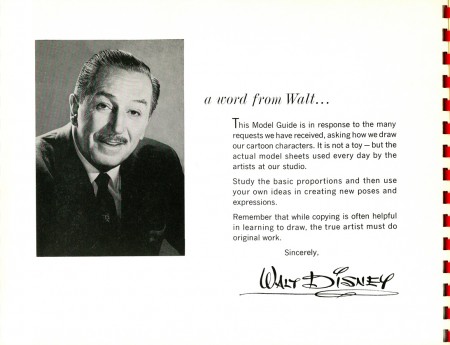 2
2
This is the inner cover which iss a thin cardboard.
as opposed to the yellow pages of paper.
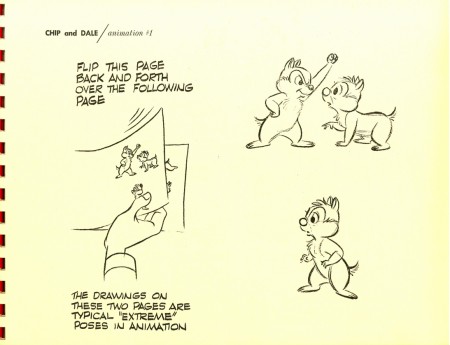 15
15
The directions tell you to flip the pages to see the movement.
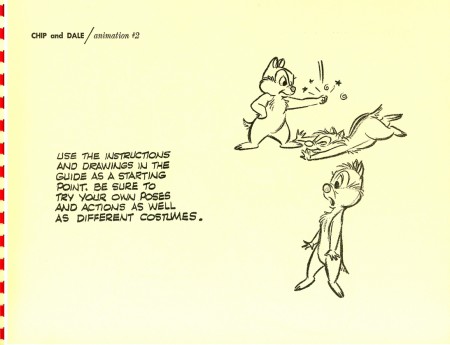 16
16
However this page is printed on the back of page 15,
and it’s impossible to flip. It doesn’t matter since the two drawings
aren’t registered to each other and flipping doesn’t work.
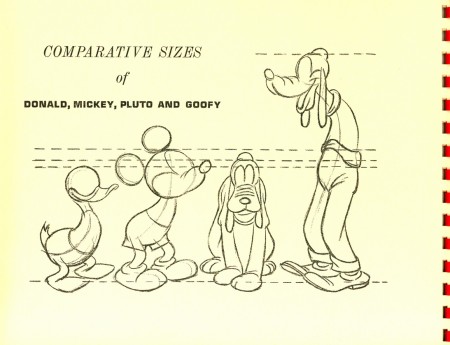 18
18
This page appears in all of the booklets.
Here’s a QT of the walk cycle on pg 12.
Chip cycle on threes.
Click left side of the black bar to play.
Right side to watch single frame.
Go here to see the lecture series posts:
Mickey / Donald / Goofy / Pluto
Here to see How To Draw Mickey.
Here to see How To Draw Donald.
Here to see How To Draw Pluto.
Here to see How To Draw Goofy (Jenny Lerew‘s Blackwing Diaries.)
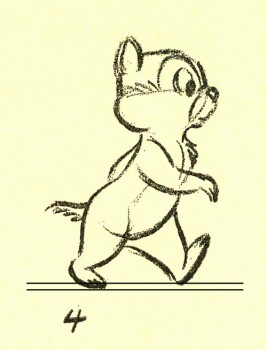
I once pointed out that a good walk should be drawn
with the two feet a distance apart from each other.
This creates a sense of depth in that walk. You might look
for this when you see other walks on line. You’ll be
surprised at how many professionals do it and how many
beginners don’t. Lately the latter is beating the former.
Books &Commentary &walk cycle 12 Sep 2009 07:40 am
Cartooning
- When I was a kid, there were few resources one could turn to for information about animation and the process of making these films. Before computers, information was somewhat more difficult to acquire.
I couldn’t afford many books on the subject. Of course, I owned the Preston Blair book and that other Walter T. Foster book about Making Animated Cartoons (the one that wasn’t drawn very well and included animation examples that just didn’t work.) My treasure was the 1958 Bob Thomas book, The Art of Animation, with its technicolor focus on Sleeping Beauty.
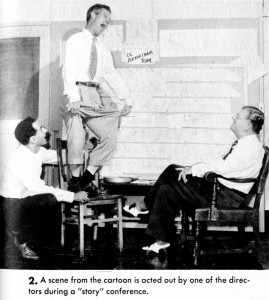 I also clipped every magazine/newspaper article or image I could find about cartoons and saved it in a homemade scrapbook. It would be years before I came upon Mike Barrier‘s Funnyworld Magazine or any other mag, for that matter, that focused exclusively on animation or cartooning.
I also clipped every magazine/newspaper article or image I could find about cartoons and saved it in a homemade scrapbook. It would be years before I came upon Mike Barrier‘s Funnyworld Magazine or any other mag, for that matter, that focused exclusively on animation or cartooning.
There were other books, and I went to the library to check them out monthly. I treasured that library copy of Robert Field‘s The Art of Walt Disney that I read over and over again. I appreciated Nat Falk‘s How to Make Animated Cartoons.
There was one book The Complete Guide to Cartooning by Gene Byrnes that had a chapter on MGM cartoons. This book had some of the greatest photos in it. Animators, inkers, directors, cels and sound effects. The pictures were great in that forties kinda way that just had me drooling animation when I looked at it. (It was published in Jan, 1950.)
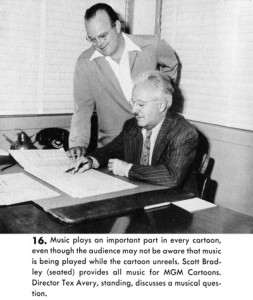 This came to me years ago when I found the animation section of this book on line. I haven’t been able to locate the site again; if I do, I’ll post the link or scan the section myself to post.
This came to me years ago when I found the animation section of this book on line. I haven’t been able to locate the site again; if I do, I’ll post the link or scan the section myself to post.
It came again recently when friend, Tom Hachtman, visited and brought a copy he owned to see if I knew about it. Of course, opening the whole book was like going home again after dozens of years. I knew every page intimately.
Two pages that stood out followed the MGM section and had the same effect within the book of seeing a Terrytoons cartoon after seeing one from MGM. Low rent. The pages look like left overs from Nat Falk’s book (and may, in fact, have been part of one of his books.)
However it amused me to look them over and actually run the peculiar walk cycle through AfterEffects to watch the motion. There are no registration marks, so I had to guess. (I didn’t take a lot of time with this, believe me.)
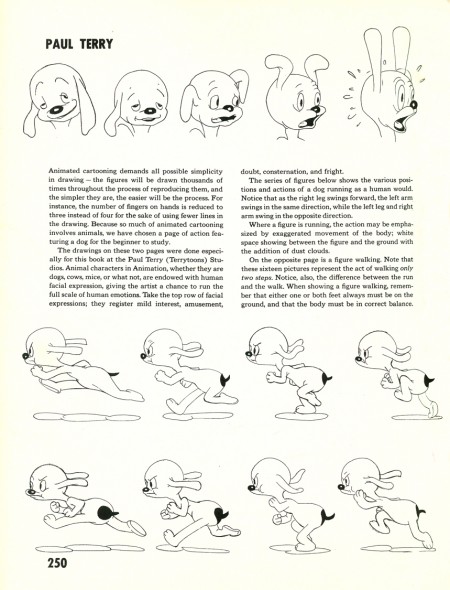
(Click any image to enlarge.)
.
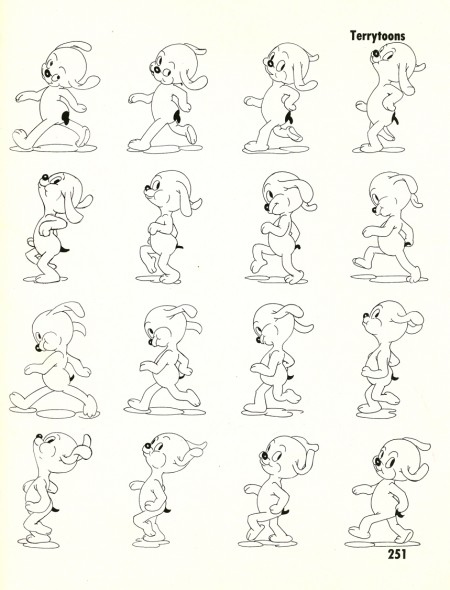
Here’s the QT of the odd pupwalk:
Pupwalk on two’s
I’m not sure who animated this – my guess Connie Rasinski
Click left side of the black bar to play.
Right side to watch single frame.
Animation &Animation Artifacts &Richard Williams &walk cycle 28 Aug 2009 07:34 am
Babbitt Camel Run
- Art Babbitt supervised and animated large sections of Raggedy Ann & Andy featuring the Camel with the Wrinked Knees. He developed the character and gave it the form it finally took in the film. Other animators followed his directions throughout the film.
It was his idea to work the Camel as if there were two people within its body so that the front half didn’t always do what the back half did. As a result, runs and walks were usually peculiar. Often the front would move and the back half would have to catch up. Art never quite understood (nor did he try to understand) what other animators were doing with Ann and Andy. Consequently his version of these characters stood out like unconscious orbs floating around his camel.
Here’s a run cycle he did. The camel’s hind front leg is on another level as is his talking mouth.
The tight tight tight style is Art’s; the assisting is by David Block.
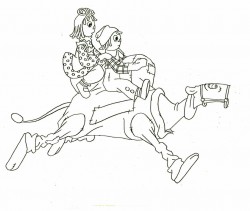 1
1 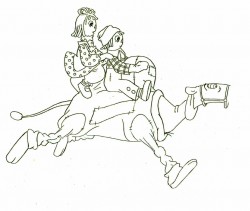 2
2(Click any image to enlarge.)
Here’s the final QT of it all together:
Babbitt’s Camel Run
Click left side of the black bar to play.
Right side to watch single frame.
Animation &Hubley &repeated posts &walk cycle 09 Jul 2009 08:12 am
Recap – Georgia walk
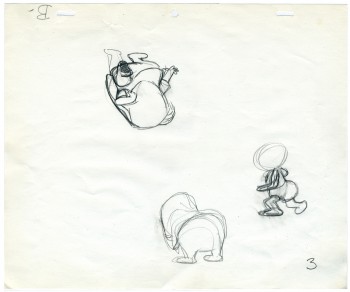 – Having posted a piece about John and Faith Hubley‘s Cockaboody yesterday, I thought I’d take the opportunity of showing off another older piece from Aug ’07. This walk cycle was animated by Tissa David. The drawings are partic-ularly rough – her first shot at the walk designed for her eyes only.
– Having posted a piece about John and Faith Hubley‘s Cockaboody yesterday, I thought I’d take the opportunity of showing off another older piece from Aug ’07. This walk cycle was animated by Tissa David. The drawings are partic-ularly rough – her first shot at the walk designed for her eyes only.
Tissa is careful not to use too much paper. Hence she reuses old paper for her very rough preliminaries as she figures out her animation.
It’s frequent, when visiting her work space, to see lots of pages featuring characters on both sides of the paper upside down as well as sideways. She doesn’t often let these rough roughs out of her hands before she throws them out. I guess I was there at the right time and talked her into giving me these drawings.
She animates the walk, here, on top pegs bacause that’s all she has left of space. Tissa nomally works on bottom pegs. Actually, since this is going to be a sliding cel, it would have been done top pegs anyway.
Georgia, the younger girl, leaves the bathroom and moves to the floor to play with a doll (whose head she accidentally pulls off).
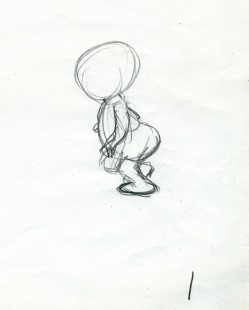 1
1 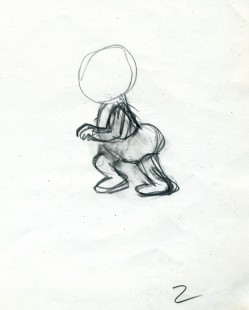 2
2
(click any image to enlarge.)
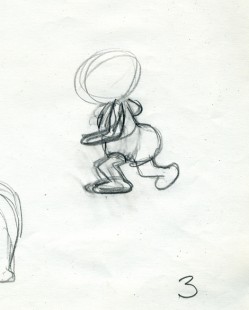 3
3 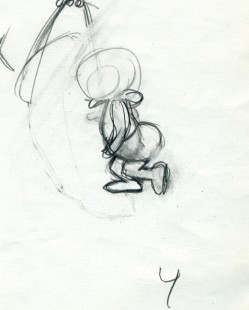 4
4
The walk is heavy and a bit flatfooted. She doesn’t come down on her toes but plants the entire foot.
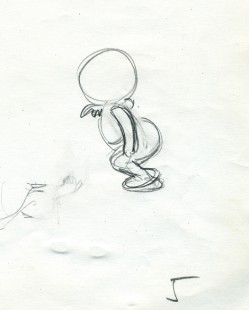 5
5 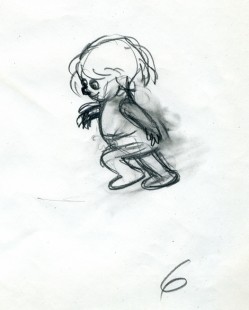 6
6
Her arms are high because, a baby, she’s still a bit off balance.
Click the very lower left to put the QT into motion.
Click the lower right to watch it a frame at a time.
Animation &Fleischer &Frame Grabs &walk cycle 08 Jun 2009 08:12 am
Betty with Fur walk
- I haven’t posted a Betty Boop walk cycle in some time, so I thought I’d pick on this one. Betty’s walking with a new fur stole, caressing it as she walks. Sweetly animated by Myron Waldman for the film Pudgy Picks a Fight in 1937.
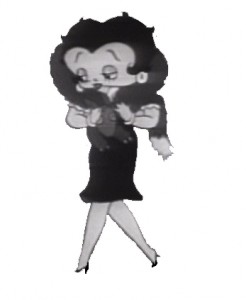 1
1 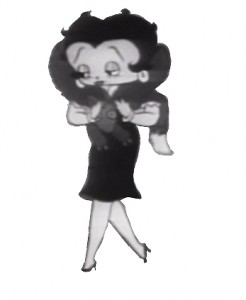 2
2(Click any image to enlarge.)
Betty wears her new fur.
on ones
Click left side of the black bar to play.
Right side to watch single frame.
Animation &Fleischer &Frame Grabs &walk cycle 09 Apr 2009 08:00 am
Poopdeck Pappy’s walk
I received this delightful note from Borge Ring:
dear michael ♫♫
You sometimes bring stuff on Popeye
There is a Popeye I like very much. It was animated by Bill Nolan in 1940 and the title is Poopdeck Pappy.
I stumbled on this short on internet and realised why Preston Blair had such a high opinion of Nolan.
Blair is quoted by – if I remember right – Charles Solomon in his book.
writes
Børge
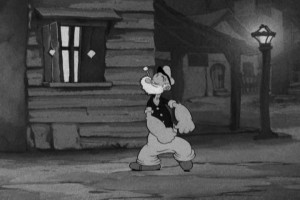 So I ran back to the film (which I know very well.) I’ve made a lot of frame grabs and was going to do a sort of mosaic (without the information that a draft might give me), but it’s taking a lot of time.
So I ran back to the film (which I know very well.) I’ve made a lot of frame grabs and was going to do a sort of mosaic (without the information that a draft might give me), but it’s taking a lot of time.
Consequently, let me make a post of this brilliant walk. There are many of them in this film and lots of hilarious dances. It’s all so balletic and rhythmic. I urge you to listen to Børge, watch the film again. It’s an absolute beauty; this is my favorite period of Fleischer’s work.
Here’s Poopdeck Pappy’s jaunty walk:
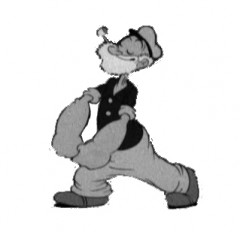 1
1 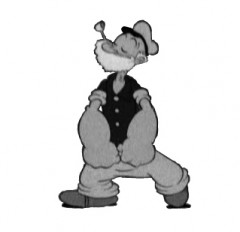 2
Poopdeck Pappy’s walk cycle
2
Poopdeck Pappy’s walk cycleOn ones at 24FPS
Click left side of the black bar to play.
Right side to watch single frame.
